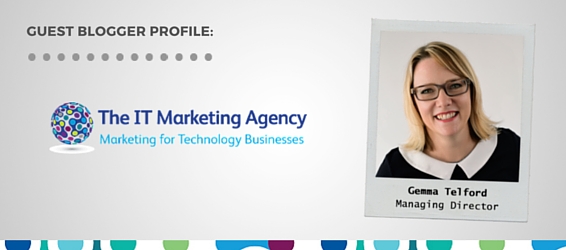29 Sep Marketing your MSP – from Start to the Next Bit (there is no finish!)
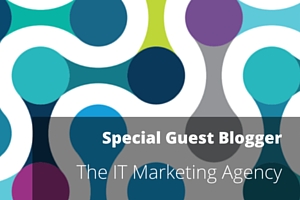 Hi there, I’m delighted and flattered that Zen Software have asked me to write a guest blog, and we thought that some simple steps to get started on marketing your MSP business would be a topic that worked for both of us, and hopefully you, too!
Hi there, I’m delighted and flattered that Zen Software have asked me to write a guest blog, and we thought that some simple steps to get started on marketing your MSP business would be a topic that worked for both of us, and hopefully you, too!
Firstly…if you’re not doing ‘much’ (or even ‘any’!) marketing, you’re not alone! In my previous roles of Head of Marketing for Ingram Micro and Network Group as well as in the work I do now, I meet a lot of MSPs. Almost without exception they tell me sheepishly “I know I should be doing more (for which I read ‘some’) marketing”. Or “Here’s my card, but don’t look at the website, it’s being redesigned.” Or if they’re being honest: “I just don’t know where to start!”.
So, here’s where to start. And by the end of this blog post, you’ll have no excuse not to – so be prepared! ☺
1. Start with you.
I usually like to start by striking the fear of God into people and asking have you got a value proposition? The main thing to understand this is not actually the scary terminology, but really just the principle. Call it your USP (unique selling point), elevator pitch, whatever you like. What it means is – can you clearly define what your business does, and why people should be doing business with you? Most people can’t easily do this.
So, step 1, here’s a cheat’s approach that simplifies it and makes it much easier:
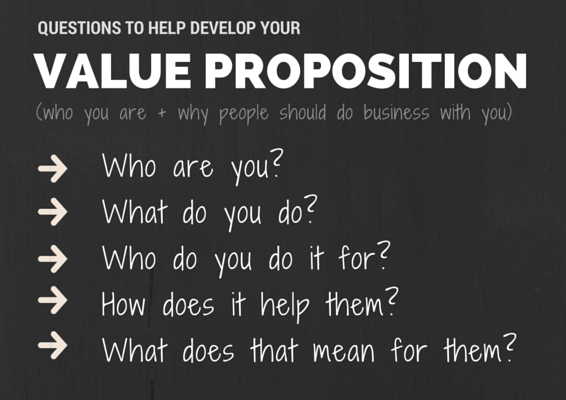
If you’re still struggling, think about why you set the business up in the first place. Often there will have been a specific reason, or you’ve got a certain area of expertise, or you work well with a specific type of customer…I promise, there is ALWAYS something.
Here’s the value proposition for my company (The IT Marketing Agency):
- Who are you? The IT Marketing Agency (everyone should get this bit right!)
- What do you do? We specialise in marketing for technology businesses.
- Who do you do it for? We work with vendors, distributors and MSPs.
- How does it help them? We provide strategic marketing advice and tactical execution of integrated campaigns in a way that’s tailored to the needs of their business.
- What does that mean for them? By working as their ‘virtual’ marketing team, or alongside their internal team we ensure that marketing is aligned with sales and measured on success.
(N.B. Don’t worry about the exact words. My definition changes all the time so if you bump into me at an event you might get a slightly different version! The key thing is that you know WHAT you do, WHO you do it for and WHY you do it.)
2. Understand your customers.
Again, this one shouldn’t be that difficult, but it’s surprising once you’re caught up in the day to day how little you think about your customers. You’re busy looking after them, after all, so of course you’re thinking about them! But actually, are you focusing your attention on the RIGHT types of customers?
You can basically sort your customer types into three ‘buckets’ – good / ok / bad.
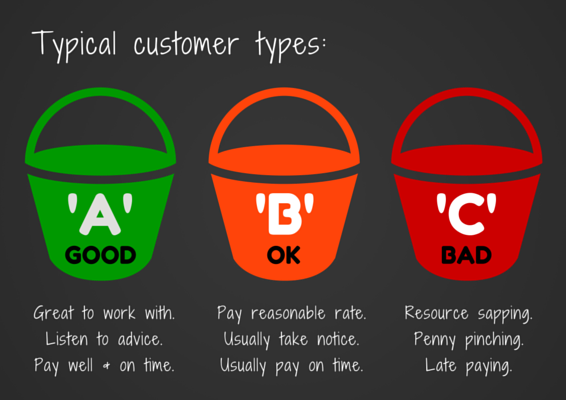
The good clients, or your ‘A’ type clients as my good friend Richard Tubb labels, them are the best ones. They are great to work with, listen to your advice, pay you well and on time. More please! Ok, or ‘B’ customers make up the majority of everyone’s customer base. They’re pretty good, they pay you a reasonable rate, usually take notice of what you say, usually pay on time or fairly close. You spend an average amount of time looking after them. Your ‘C’ clients are Vampires!! They want your blood! You spend an inordinate amount of time on them, they are penny pinching, they pay late…you know the type. Your heart sinks when you recognise their number on your phone. Honestly, the best thing you can do with these type of customers is sack them!
Do you know, or with a bit of effort, could you identify your ‘sweet spot’ customers?
These are you current ‘A’ customers. Build up a little profile of what they look like…
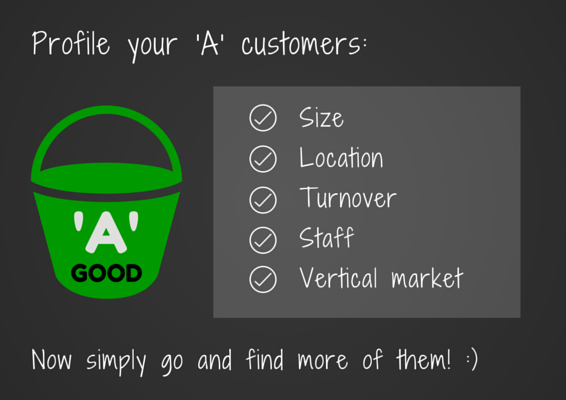
Basically find out as much about them as you can. Then find more of them! Sounds easy, right?
“I’ve got a database” is also something that I hear a lot from MSPs. (Often the ones that don’t do much/any marketing, bizarrely!) My heart often sinks when I hear those words! A database of old contacts is not the same thing as a list of prospects. What you need to do is model your sweet spot customers and go and buy a list of other companies that look like them!
A couple of important things to consider. There are MANY data companies out there. Use a good one, with a good reputation. Make sure you specify in as much detail as possible what you are looking for. Data shouldn’t be that expensive to buy, so buy enough. A few thousand records if you can. But specify exactly WHO you want to contact. Is it always the MD? If it’s schools, is it the Headmaster or the IT Manager? Or both? Tell the data company the type of decision maker you are looking for. And ask them for personal email addresses. If you get generic email addresses such as ‘info@’ or ‘general@’ the chances are your carefully crafted messages aren’t even going to get through to the right person. It can be a bit of a minefield, but a good database, to extend the mining analogy, can be worth its weight in gold!
3. Say something!
Ok, so now you know who YOU are, and who your customers are, comes the tricky bit – you need to find something to say! Start off with something simple and that you know about. Something that your current customers buy from you. Where are they struggling? What’s keeping them awake at night?
You need to start the marketing process and that means making people aware you are there, then attract them towards you before they can consider you in the buying process and then making the decision to buy.
Marketing is all about filling your sales funnel. So start the conversation and start bringing people into your funnel. Make your messages useful and relevant to your audience. If you don’t want to or can’t write your own material, see what else is out there that you can repurpose. Pinch collateral from suppliers, vendors and distributors – most will be happy you are sharing their material, and may even be willing to support you in more concrete ways – sometimes even parting with some cash!
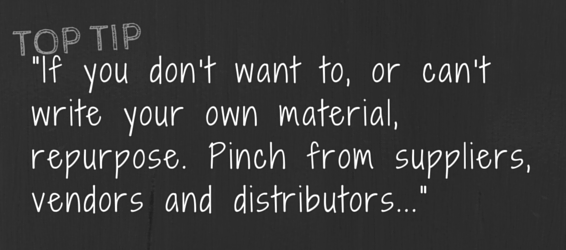
NOTE from James @ ZSW: You can find marketing collateral for partners here. Always ask if you have any bespoke requests – we love to get involved with your projects!
4. Put in a call to action.
Having put together your sparkly new campaign, don’t forget to give your prospects and customers a reason to call you! Did you know that around 70% of the decision to buy is already taken before someone picks up the phone to you? (Yes, makes that website conversation at the beginning feel a bit uncomfortable, doesn’t it?!).
When qualifying leads, we use a process called BANT. It’s a simple mnemonic. It’s making sure that the person you are talking to is the right BUYER of your product. That they have the AUTHORITY to buy, that they have a NEED and that the need is TIME-SENSITIVE – in other words, they want to sort it out NOW! Good leads may have some of these elements, but a lead or prospect that is a BANT lead is red hot and ready to buy.
If you can get your inbound marketing campaign to pull people towards you and they’ve already made 70% of the decision to buy before they speak to you, you could already be nearly there.
5. Keep doing it.
This one is short and simple. Research has shown that on average it takes 9 ‘touches’ (which could be calls, emails, a combination of both) before a prospect will go from having never heard of you to being ready to buy. So you can’t rest on your laurels because you’ve got your first campaign out (I know, right?). You’ve got to keep doing it, keep doing it.
There are a whole bunch of tools out there, from sophisticated marketing automation platforms to software specifically developed to help you with the sales process. These days CRM, RMM and even some PSA type software have built in marketing packages. In the early days, I’d advise you to keep it pretty simple.
Something easy like Mailchimp is a quick and cost effective way to get your first campaigns out. To be honest you don’t need to do much complicated analysis…much better just to keep the marketing messages going out until the prospects start coming to you!
6. Using an agency?
If you decide to use an agency – this is a big step. An agency can’t just pick up your marketing if you don’t understand what you’re trying to achieve yourself. They can also seem expensive. However, I would also weigh up what an agency could save you.
Many MSPs and resellers that I come across are doing the marketing themselves and feel intensely uncomfortable or out of their comfort zone. A good agency will help you explore and understand your needs.
What does success look like? What do you want to see as an ROI?
At the other end of the spectrum, many resellers opt for a marketing apprentice or someone fresh out of uni. They may know all the buzzwords and be a whizz on social media, but honestly it’s unlikely they will be able to adapt their approach to YOUR messaging and YOUR customers. Of course, doing something is better than doing nothing. But don’t expect someone fresh out of uni to be able to write copy for technically led campaigns into the healthcare sector if they don’t have a writing or healthcare background. Just because you put someone in a job doesn’t mean they can do it!
Marketing is made up of a number of elements and skills, and that can be why an agency is a good call – they’re likely to have people who can write copy, do design, know digital and social marketing. They’re also likely to have senior strategic people who understand your business and your market. So this actually can save you a lot of time and money by getting the process right in the first place.
7. Invest in marketing
Last, but definitely not least – marketing shouldn’t just be seen as a cost, but an investment – the more you put in (and I don’t just mean cash, but effort, thought and time), the more you get out.
You need to measure the success of your marketing in the same way as you should measure the effectiveness of everything in your business. So understand what marketing success looks like for you, and then measure whether what you’re doing is giving you the success you need. If it isn’t – change something. And remember, marketing is a process, not an event!
Thanks!
I really hope you’ve found this blog useful and that it gives you at least a place to start thinking about how marketing can help you. I’d encourage you to get out there and talk to other MSP’s too – go to events, join CompTIA, look at what networking groups there are that might work for you. Running a business can be a lonely place. But by getting out there, working on your business rather than always just in it, you realise you’re not on your own at all.
Gemma Telford (MD, The IT Marketing Agency)
P.s – If you’d like the PDF version of ‘Marketing your MSP’, please feel free to download it from our web site.


